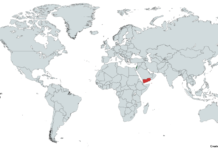Iran and the United States executed a long-anticipated prisoner exchange yesterday (9/18/23), facilitated by Qatar, that also involved the release of $6 billion in Iranian funds frozen in South Korea since 2018. While seen as a positive step in resolving tensions between the two nations, this deal has drawn mixed reactions from various quarters. This exchange occurred just before the United Nations General Assembly meeting in New York, where Ebrahim Raisi, the Iranian President, was scheduled to speak.
Under the terms of the agreement, five American detainees with dual nationality were set to leave Tehran for Qatar’s capital, Doha, before continuing their journey to the United States. In return, five Iranians held in the U.S. were to be released. Notably, two of the Iranian detainees chose to remain in the U.S., while one would join his family in a third country. The funds unfrozen in South Korea were successfully transferred to Qatar, signifying the official start of the exchange.
The detained Americans include an environmentalist with British nationality, Morad Tahbaz, 67, businessman Emad Shargi, 57, and Siamak Namazi, 51. The other 2 prisoners are not identified. The 5 Iranians are Kaveh Afrasiabi, Amin Hassanzadeh, Reza Sarhangpour-Kafrani, Kambiz Attar-Kashani, and Mehrdad Moin-Ansari.
This intricate diplomatic maneuvering resulted from months of secret negotiations and numerous rounds of indirect meetings between Tehran and Washington, with Qatar playing a central mediating role. While initially focused on the nuclear dispute between Iran and the U.S., the talks eventually shifted towards resolving the issue of detainees, recognizing the complexity of the nuclear negotiations.
The exchange has been met with a mixed response in both countries. Critics argue that it sets a dangerous precedent and rewards hostage-taking. At the same time, proponents see it as a crucial step towards building trust and potentially reviving diplomacy on issues like Iran’s nuclear program. The Biden administration insists that the unfrozen funds will be closely monitored to ensure they are used for non-sanctioned goods like food, agriculture, and medicine.
This development comes amidst ongoing tensions between Iran and the U.S., particularly related to Iran’s nuclear ambitions. While the prisoner exchange offers a glimmer of hope for future diplomacy, the broader outlook remains uncertain. Iran’s economic challenges and the U.S.’s desire for Iran to cooperate with the International Atomic Energy Agency further complicate the situation.









